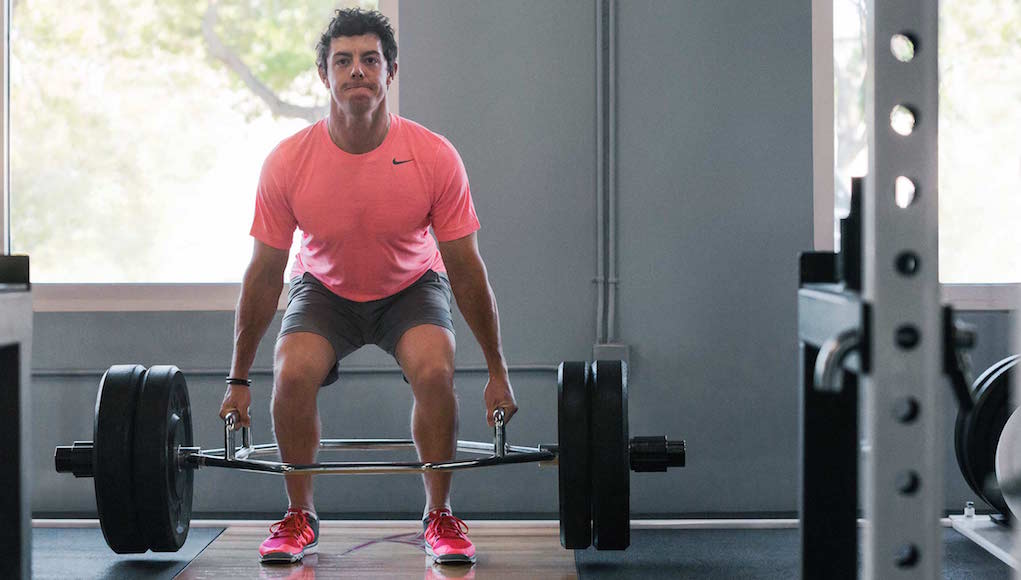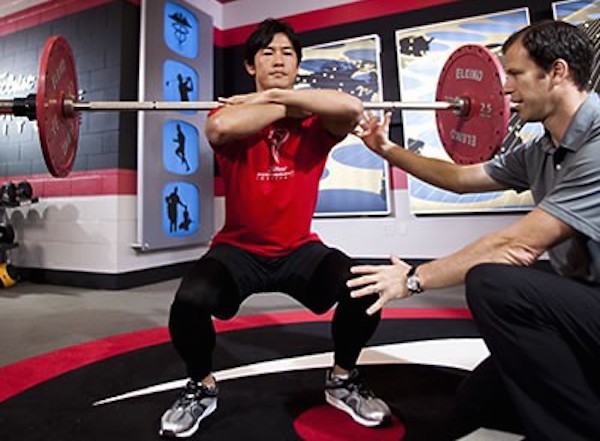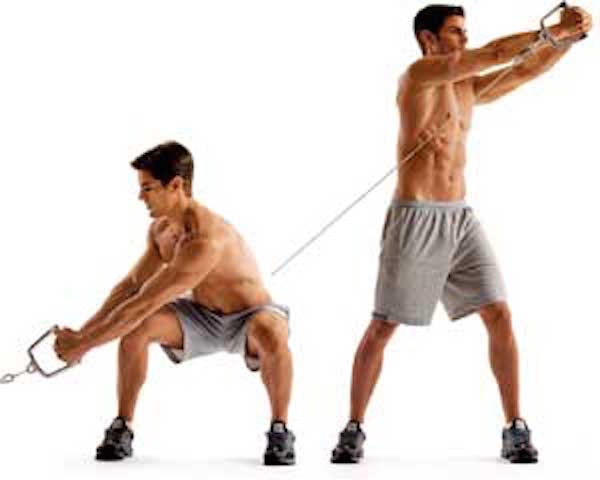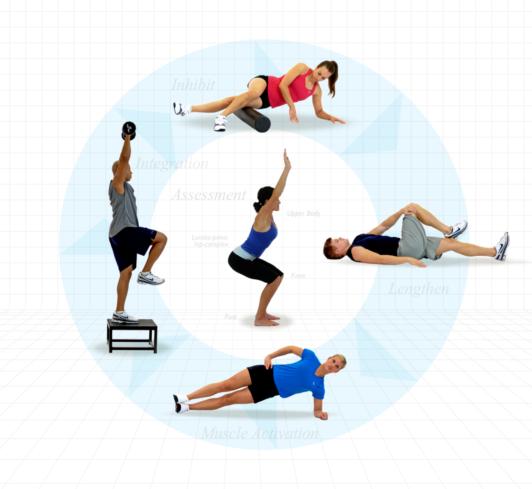Instruction
Golf fitness essentials for this offseason

For most of the Northeast, golf’s offseason is approximately five months long without much time for outside golfing activities. For that reason, it’s a great time to build on summer golfing achievements and work on reoccurring issues in the golf swing by beginning a golf fitness plan. Most people would like to work out in the offseason, but truthfully most people have no idea where to start.
That’s where this story comes in.
An offseason workout plan should be broken into three separate, four-week phases to help the golfer be fully prepared for opening day come Spring.
Fall Corrective Exercise and Stabilization Program
The Fall is best time to start any fitness program and the best way to get started is to have a complete golf fitness assessment. Since the winter came a little late in the Northeast this year, there is still time to get started on the corrective exercise and stabilization phase. The way to attain any fitness goal is to follow a progression plan of mobility, stability, coordination, strength and power to achieve optimal health and physical development. A certified TPI Golf Fitness Professional can assist in the screening process, program design, goal setting and the program implementation to get you on the right path in the attainment of any goal.

- First, we conduct an in-depth health questionnaire screening to identify family history, exercise history and any past or lingering medical conditions.
- Second, we conduct a 16-point golf-specific movement assessment that will identify any physical limitations that may affect the golf swing.
- Third, we conduct a 3-D technology assessment to identify flaws in your kinematic sequence as well as balance and weight transfer.
- Fourth, we then do a complete flexibility assessment to help us understand your physical limitations and how they relate to the golf swing.
- Last, we develop a corrective exercise program to correct muscle imbalances, address any injuries, build core strength and increase flexibility, which all lead to the optimal athletic performance.
Winter Strength and Conditioning Program
The Winter is our most sedentary season, but it is a great time to work on strength for the upcoming golf season. One of the worst things a person can do is try to develop their own golf fitness routine. Most tend to over lift and expose themselves to injury. A golf fitness professional will develop a strength program to correct any strength imbalances, strengthen golf-specific movement patterns and lay the foundation for spring power training.

According to a study published in the Journal of Strength and Conditioning, here are some good reasons why winter strength training might make sense:
- Club speed increased by 7-10 percent, or the equivalent of 10-15 yards, without any ill-effects on accuracy.
- Strength training was shown to improve muscular strength and muscular endurance, which has a positive impact on golf swing consistency during an 8-hour, 36-hole round of competitive golf.
- Golfers who strength-trained demonstrated better putting distance control performance.
- An increase in strength and flexibility allowed golfers to adopt more optimal swing mechanics.
Early Spring Power Conditioning Program
By early Spring, the golf season will be quickly approaching and then is the time to train the power sequence of the golf fitness program. Remember that golf is an explosive sport; it is not an endurance sport. Many people train their body for golf as if it was an endurance sport. Power conditioning consists of moving weights through a complete range of motion while keeping optimal speed during the exercise.
There are plenty of great exercises that will increase your rotational speed, power and strength. I like using medicine ball exercises for the upper body and plyometric exercises for the lower body, as they improve all components of the golf swing as well as balance. By the time the season is in full swing, you will feel the effects of all three of the phases of golf fitness training and then you will finally be on the road to be the best golfer that you can be.
Get motivated!
You can find qualified fitness professionals near you by visiting “Find an Expert” at mytpi.com. If you have any additional questions or comments, please feel free to contact me at [email protected].
- LIKE81
- LEGIT11
- WOW2
- LOL2
- IDHT4
- FLOP9
- OB3
- SHANK40
Instruction
The Wedge Guy: The easiest-to-learn golf basic

My golf learning began with this simple fact – if you don’t have a fundamentally sound hold on the golf club, it is practically impossible for your body to execute a fundamentally sound golf swing. I’m still a big believer that the golf swing is much easier to execute if you begin with the proper hold on the club.
As you might imagine, I come into contact with hundreds of golfers of all skill levels. And it is very rare to see a good player with a bad hold on the golf club. There are some exceptions, for sure, but they are very few and very far between, and they typically have beat so many balls with their poor grip that they’ve found a way to work around it.
The reality of biophysics is that the body moves only in certain ways – and the particulars of the way you hold the golf club can totally prevent a sound swing motion that allows the club to release properly through the impact zone. The wonderful thing is that anyone can learn how to put a fundamentally sound hold on the golf club, and you can practice it anywhere your hands are not otherwise engaged, like watching TV or just sitting and relaxing.
Whether you prefer an overlap, interlock or full-finger (not baseball!) grip on the club, the same fundamentals apply. Here are the major grip faults I see most often, in the order of the frequency:
Mis-aligned hands
By this I mean that the palms of the two hands are not parallel to each other. Too many golfers have a weak left hand and strong right, or vice versa. The easiest way to learn how to hold the club with your palms aligned properly is to grip a plain wooden ruler or yardstick. It forces the hands to align properly and shows you how that feels. If you grip and re-grip a yardstick several times, then grip a club, you’ll see that the learning curve is almost immediate.
The position of the grip in the upper/left hand
I also observe many golfers who have the butt of the grip too far into the heel pad of the upper hand (the left hand for right-handed players). It’s amazing how much easier it is to release the club through the ball if even 1/4-1/2″ of the butt is beyond the left heel pad. Try this yourself to see what I mean. Swing the club freely with just your left hand and notice the difference in its release from when you hold it at the end of the grip, versus gripping down even a half inch.
To help you really understand how this works, go to the range and hit shots with your five-iron gripped down a full inch to make the club the same length as your seven-iron. You will probably see an amazing shot shape difference, and likely not see as much distance loss as you would expect.
Too much lower (right) hand on the club
It seems like almost all golfers of 8-10 handicap or higher have the club too far into the palm of the lower hand, because that feels “good” if you are trying to control the path of the clubhead to the ball. But the golf swing is not an effort to hit at the ball – it is a swing of the club. The proper hold on the club has the grip underneath the pad at the base of the fingers. This will likely feel “weak” to you — like you cannot control the club like that. EXACTLY. You should not be trying to control the club with your lower/master hand.
Gripping too tightly
Nearly all golfers hold the club too tightly, which tenses up the forearms and prevents a proper release of the club through impact. In order for the club to move back and through properly, you must feel that the club is controlled by the last three fingers of the upper hand, and the middle two fingers of the lower hand. If you engage your thumbs and forefingers in “holding” the club, the result will almost always be a grip that is too tight. Try this for yourself. Hold the club in your upper hand only, and squeeze firmly with just the last three fingers, with the forefinger and thumb off the club entirely. You have good control, but your forearms are not tense. Then begin to squeeze down with your thumb and forefinger and observe the tensing of the entire forearm. This is the way we are made, so the key to preventing tenseness in the arms is to hold the club very lightly with the “pinchers” — the thumbs and forefingers.
So, those are what I believe are the four fundamentals of a good grip. Anyone can learn them in their home or office very quickly. There is no easier way to improve your ball striking consistency and add distance than giving more attention to the way you hold the golf club.
More from the Wedge Guy
- The Wedge Guy: Golf mastery begins with your wedge game
- The Wedge Guy: Why golf is 20 times harder than brain surgery
- The Wedge Guy: Musings on the golf ball rollback
- LIKE86
- LEGIT13
- WOW6
- LOL1
- IDHT0
- FLOP4
- OB1
- SHANK8
Instruction
Clement: Stop ripping off your swing with this drill!

Not the dreaded headcover under the armpit drill! As if your body is defective and can’t function by itself! Have you seen how incredible the human machine is with all the incredible feats of agility all kinds of athletes are accomplishing? You think your body is so defective (the good Lord is laughing his head off at you) that it needs a headcover tucked under the armpit so you can swing like T-Rex?
- LIKE0
- LEGIT2
- WOW2
- LOL0
- IDHT0
- FLOP0
- OB0
- SHANK2
Instruction
How a towel can fix your golf swing

This is a classic drill that has been used for decades. However, the world of marketed training aids has grown so much during that time that this simple practice has been virtually forgotten. Because why teach people how to play golf using everyday items when you can create and sell a product that reinforces the same thing? Nevertheless, I am here to give you helpful advice without running to the nearest Edwin Watts or adding something to your Amazon cart.
For the “scoring clubs,” having a solid connection between the arms and body during the swing, especially through impact, is paramount to creating long-lasting consistency. And keeping that connection throughout the swing helps rotate the shoulders more to generate more power to help you hit it farther. So, how does this drill work, and what will your game benefit from it? Well, let’s get into it.
Setup
You can use this for basic chip shots up to complete swings. I use this with every club in my bag, up to a 9 or 8-iron. It’s natural to create incrementally more separation between the arms and body as you progress up the set. So doing this with a high iron or a wood is not recommended.
While you set up to hit a ball, simply tuck the towel underneath both armpits. The length of the towel will determine how tight it will be across your chest but don’t make it so loose that it gets in the way of your vision. After both sides are tucked, make some focused swings, keeping both arms firmly connected to the body during the backswing and follow through. (Note: It’s normal to lose connection on your lead arm during your finishing pose.) When you’re ready, put a ball in the way of those swings and get to work.

Get a Better Shoulder Turn
Many of us struggle to have proper shoulder rotation in our golf swing, especially during long layoffs. Making a swing that is all arms and no shoulders is a surefire way to have less control with wedges and less distance with full swings. Notice how I can get in a similar-looking position in both 60° wedge photos. However, one is weak and uncontrollable, while the other is strong and connected. One allows me to use my larger muscles to create my swing, and one doesn’t. The follow-through is another critical point where having a good connection, as well as solid shoulder rotation, is a must. This drill is great for those who tend to have a “chicken wing” form in their lead arm, which happens when it becomes separated from the body through impact.
In full swings, getting your shoulders to rotate in your golf swing is a great way to reinforce proper weight distribution. If your swing is all arms, it’s much harder to get your weight to naturally shift to the inside part of your trail foot in the backswing. Sure, you could make the mistake of “sliding” to get weight on your back foot, but that doesn’t fix the issue. You must turn into your trial leg to generate power. Additionally, look at the difference in separation between my hands and my head in the 8-iron examples. The green picture has more separation and has my hands lower. This will help me lessen my angle of attack and make it easier to hit the inside part of the golf ball, rather than the over-the-top move that the other picture produces.


Stay Better Connected in the Backswing
When you don’t keep everything in your upper body working as one, getting to a good spot at the top of your swing is very hard to do. It would take impeccable timing along with great hand-eye coordination to hit quality shots with any sort of regularity if the arms are working separately from the body.
Notice in the red pictures of both my 60-degree wedge and 8-iron how high my hands are and the fact you can clearly see my shoulder through the gap in my arms. That has happened because the right arm, just above my elbow, has become totally disconnected from my body. That separation causes me to lift my hands as well as lose some of the extension in my left arm. This has been corrected in the green pictures by using this drill to reinforce that connection. It will also make you focus on keeping the lead arm close to your body as well. Because the moment either one loses that relationship, the towel falls.


Conclusion
I have been diligent this year in finding a few drills that target some of the issues that plague my golf game; either by simply forgetting fundamental things or by coming to terms with the faults that have bitten me my whole career. I have found that having a few drills to fall back on to reinforce certain feelings helps me find my game a little easier, and the “towel drill” is most definitely one of them.
- LIKE12
- LEGIT2
- WOW2
- LOL0
- IDHT0
- FLOP2
- OB0
- SHANK8
-

 19th Hole2 weeks ago
19th Hole2 weeks agoDave Portnoy places monstrous outright bet for the 2024 Masters
-

 19th Hole2 weeks ago
19th Hole2 weeks agoTiger Woods arrives at 2024 Masters equipped with a putter that may surprise you
-

 19th Hole15 hours ago
19th Hole15 hours ago‘Absolutely crazy’ – Major champ lays into Patrick Cantlay over his decision on final hole of RBC Heritage
-

 19th Hole3 weeks ago
19th Hole3 weeks agoReport: Tiger Woods has ‘eliminated sex’ in preparation for the 2024 Masters
-

 19th Hole1 week ago
19th Hole1 week agoTwo star names reportedly blanked Jon Rahm all week at the Masters
-

 19th Hole7 days ago
19th Hole7 days agoReport: LIV Golf identifies latest star name they hope to sign to breakaway tour
-

 19th Hole1 week ago
19th Hole1 week agoNeal Shipley presser ends in awkward fashion after reporter claims Tiger handed him note on 8th fairway
-

 19th Hole6 days ago
19th Hole6 days agoBrandel Chamblee has ‘no doubt’ who started the McIlroy/LIV rumor and why
















Pingback: Revolutionize Your Golf Game with Mental Fitness! – linkedgreens
Ryan
Feb 8, 2016 at 3:33 am
I definitely know that fitness is integral in being successful at golf, just wish there was an actual exercise regimen to follow in this article and not just an explanation why lol.
Dr Troy
Feb 4, 2016 at 6:40 pm
I cannot tell you how important the modern day golfer and fitness are intertwined together. There are a few older guys at our club that can barely make it through 18 holes this time of year and they REFUSE to lift, walk on a treadmill, stretch, etc. It baffles me when they complain about “being old” to do too much or “not getting any easier”. There IS something you can do about it! Anyways, enough of my soapbox….Hopefully this article will motivate someone not already with an exercise regimen to get going…
John vickers
Feb 4, 2016 at 5:14 pm
Golf fitness is overrated! The best golfer in modern day era whom also ushered in golf fitness in today’s era is no longer able to play post seven surgeries (knee, back). Most would say he was in great shape, yet it did not prevent injury just like it didn’t prevent Rory’s back injury a few years a ago. Being in shape is great, but it won’t necessarily make you an elite or better golfer as evidenced by the thousands of examples out there who did not improve with golf fitness. Ask me how you really improve your golf swing!
Ted Frick
Feb 4, 2016 at 6:14 pm
How do you really improve your golf swing?
Cam
Feb 4, 2016 at 6:42 pm
Wrong John.
The reason why Tiger is injured all the time is because his body cannot handle the intense amount of torque it creates on his swing. Happy medium is where you need to be.
T
Feb 4, 2016 at 9:43 pm
So you say it is overrated citing Tiger and Rory…
You’re right, what a waste of time.
Arnold
Feb 4, 2016 at 11:03 pm
And golfers wonder why other people say golf isn’t a sport…
Café
Feb 5, 2016 at 9:08 am
In the case of Tiger, I think he’s been doing too much fitness for a long time, add to that tall the time he spends on the range hitting balls using a very straining swing, it would’ve been unlikely to see him go through his career uninjured You cant blame being fit for not preventing someone who has excessive behaviour such as Tiger. Rory’ swing is very straining on his lower back too and his injury happened before he started working with a professional physical trainer. When you swing the club without really thinking about fitness or how your body is affected, chances are you will introduce unbalance, and in Rory’s case it lead to his back injury. Now that he’s working seriously in the gym, he has a healthy programme to strengthen his lower back and protect himself from injuries.
If you have a smart gym routine and train reasonably, it can only make you a better golfer. Everyone benefits from a lil extra strength, as it usually results in better hand eye coordination and better control of the club in your swing.
prime21
Feb 5, 2016 at 6:06 pm
Tiger’s injuries have little to do with golf fitness, so much as the other crazy programs he decided to mix in. You can’t tell if someone is in great shape by looking at them, as the article states, one has to be assessed in order to figure that out. If someone had diesel biceps but poor glute strength, which one do you “look” at to tell if they are in great shape? The golf swing, when made properly, is a dynamic move that puts stress on the body. Proper fitness allows for stabilization and mobility throughout this process, but it does not mean that being in great shape completely removes injury from the equation. It only means that the chances of it occurring are much lower because the players body is strong and flexible enough to withstand the forces at work. Mixed with proper nutrition and rest, ANY player would see positive results. Where you are completely mistaken is in your assumption that fitness alone would make one an “elite or better golfer”. That comes from swinging the club on plane, sequencing, club face and path control, etc. ALL of these things are easier to attain, and just as important, repeat, when the proper range of motion and stability are present.
If you have a shitty swing and you get in great shape, you simply become a person in great shape with the same shitty swing.